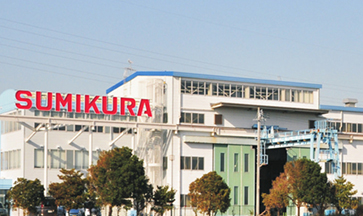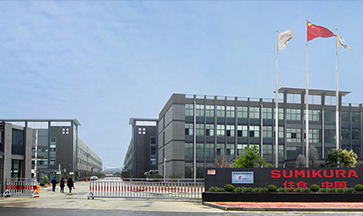In the fast-moving world of sheet-metal processing, precision, speed and flexibility have become critical differentiators. Sumikura’s latest high-speed shear line — often described as a “rotary oscillating shear line” — is emerging as a standout solution. The system enables continuous material cutting at very high line speeds (up to around 80 m/min in one specification) across a range of widths and thicknesses.
For manufacturers of automotive outer/inner panels, packaging steel, aluminum products and transformer cores, the appeal is clear: higher throughput, lower scrap, and better material utilisation.
The cutting tool rotor not only turns but also moves with a slight back-and-forth or oscillation, enabling smoother cuts, minimal burrs and improved precision.
The “flying shear” concept means the coil remains in motion while being cut, so production doesn’t have to stop and start — which enables the high‐line speeds.
The design supports variable material widths and thicknesses (e.g., widths up to ~1,850 mm, thicknesses in the 0.3-3.0 mm range) in some models.
The net benefit: production lines can rapidly feed sheet-metal, cut it to length without stopping, and stack it downstream — significantly reducing idle time and increasing effective throughput.
Automotive lightweighting & higher throughput: With automakers increasingly using ultra-high-strength steel, aluminum and hybrid materials for vehicle body panels, the demands on blanking and shearing lines are increasing. Sumikura is a recognised player supplying to automotive panel manufacture.
Material efficiency and waste reduction: High-speed systems with minimal downtime help reduce scrap and improve yield — a key cost lever for sheet-coil processors.
Global manufacturing competition: As global OEMs push for higher productivity and lower cost per part, equipment vendors who can deliver the “speed + precision + uptime” trifecta become more attractive.
Versatility across industries: Beyond automotive, these shear lines are used for packaging steel, transformer silicon-steel, appliances and other sheet-metal markets. The oscillating shear line is being promoted as adaptable across a range of materials.
Sumikura, founded in Japan, has been in the business of shearing equipment for decades (having roots back to 1947). In recent years it has come under the umbrella of Hengli CNC Technology Co., Ltd., which describes Sumikura as a strategically important unit and global-shearing-equipment supplier.
Key strengths that Sumikura brings to the table include:
Deep experience in complete sheet-metal blanking/sheet-cutting lines, not just standalone shears.
High-quality build-and-precision reputation (important for ultra-high strength and automotive-grade materials).
Global reach (machines delivered to major automakers and sheet-metal processors worldwide).
On the flip side, to maintain leadership they will need to manage:
The rapid evolution of materials (e.g., multi-material stacks, advanced high-strength steels, coated materials).
Rising expectations for digitalisation, predictive maintenance and full-line integration (Industry 4.0).
Competitive pressure from other equipment vendors offering “flying shear” and other high-speed solutions.
Even higher line speeds & larger formats: Some high-speed shear lines are advertised with speeds of 100 m/min or more. The push for ever-faster throughput will continue.
Greater automation and integration: Shear lines will increasingly be part of fully automated blanking/feeding/stamping lines, with robotics, vision systems and digital feedback loops.
Material and thickness diversification: As manufacturers adopt mixed materials (e.g., steel + aluminum stacks) or ultra-thin modern sheets, shear lines must adapt for wider ranges and stronger materials without sacrificing speed or precision.
Sustainability and cost-efficiency pressures: With energy costs, waste/recycling premiums and carbon constraints rising, equipment that boosts yield and lowers downtime becomes a stronger value-proposition.
Global supply-chain shifts: As OEMs localise production or diversify sourcing, equipment vendors like Sumikura may capture growth in new regions — particularly Asia, Eastern Europe, and North America.
Evaluate not just shear-speed specs but overall line uptime and integration with upstream/downstream systems (coil uncoiler → leveler → shear → stacker).
Assess material-range flexibility: width, thickness, material type (CR, GA, coated, aluminium) and transitions between jobs.
Consider digital readiness: remote diagnostics, preventive maintenance, spare-parts support and retrofit potential.
Factor in total cost of ownership (TCO): throughput gains must justify higher equipment cost, integration cost and operator training.
Look at vendor after-sales service, global support footprint and spare parts availability — especially for high-precision, high-speed machines.

Ihre Spezialisten für Schnittlinien!
 Fabrik in Japan
Fabrik in Japan
ADRESSE
487-3, Sanshincho, Chuoku, Hamamatsu, Shizuoka, Japan
 Lokaler Markt in Japan:+81 53-425-5331
Lokaler Markt in Japan:+81 53-425-5331
 Fabrik in China
Fabrik in China
ADRESSE
265 Yixian Road, Deqing, Zhejiang, China
 Überseemarkt :+86 572-883-2016
Überseemarkt :+86 572-883-2016